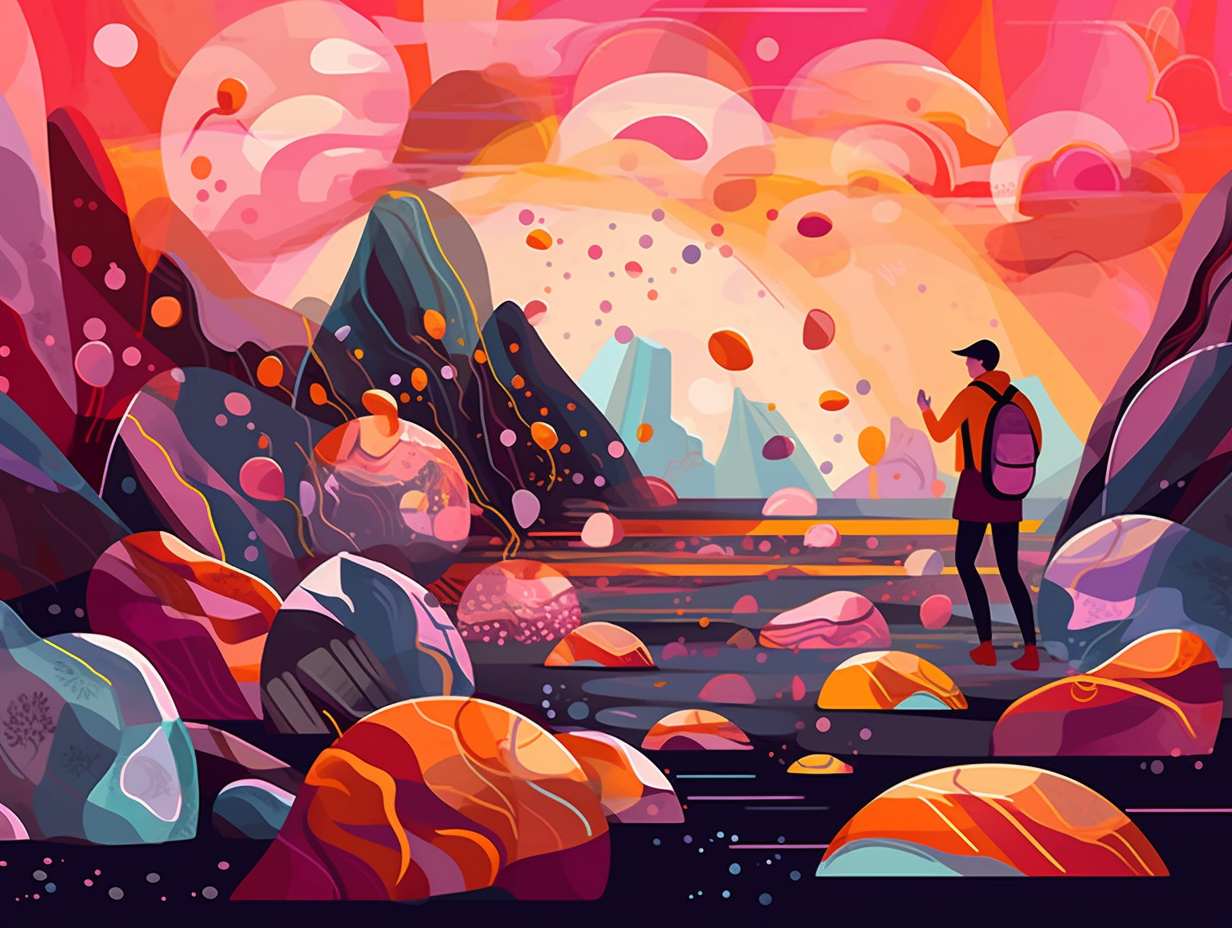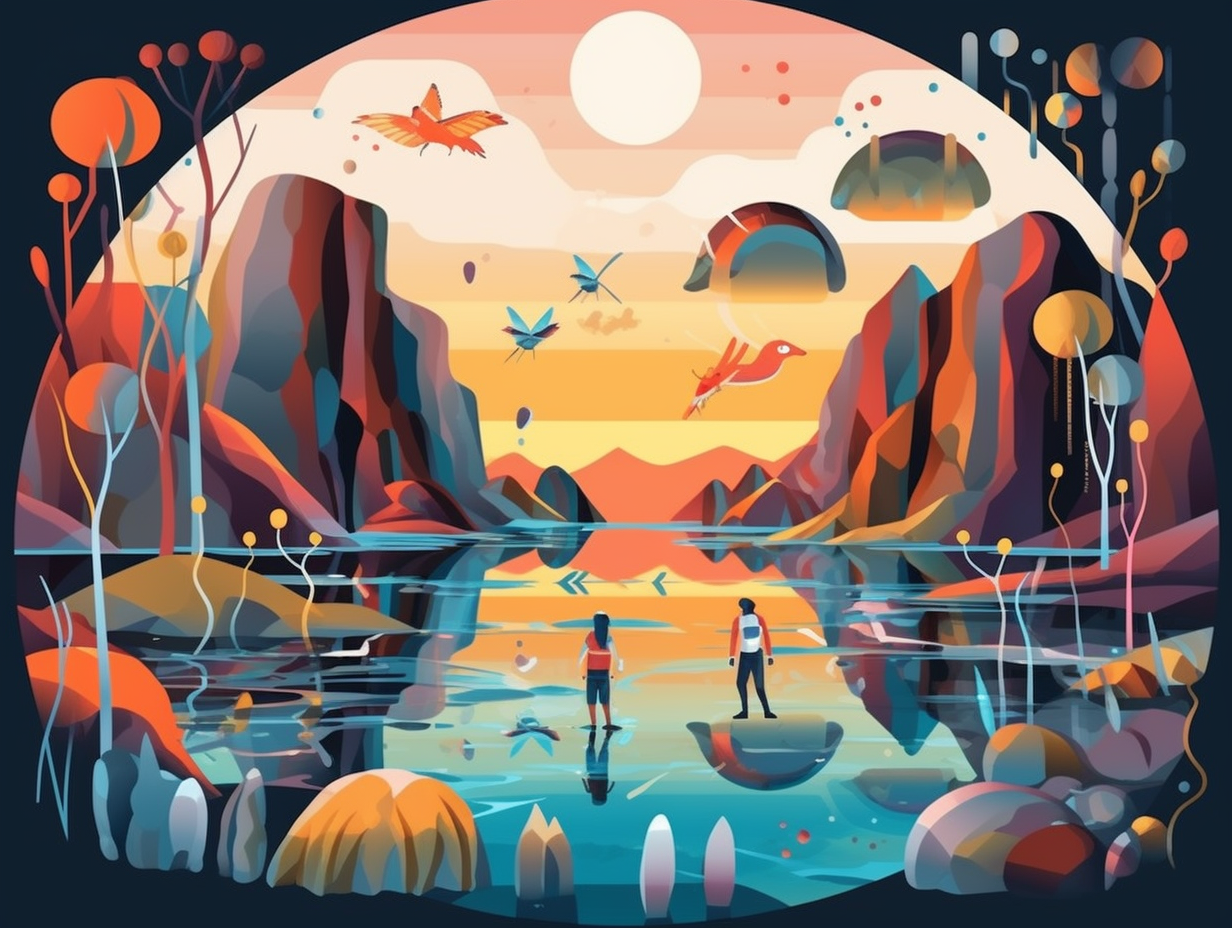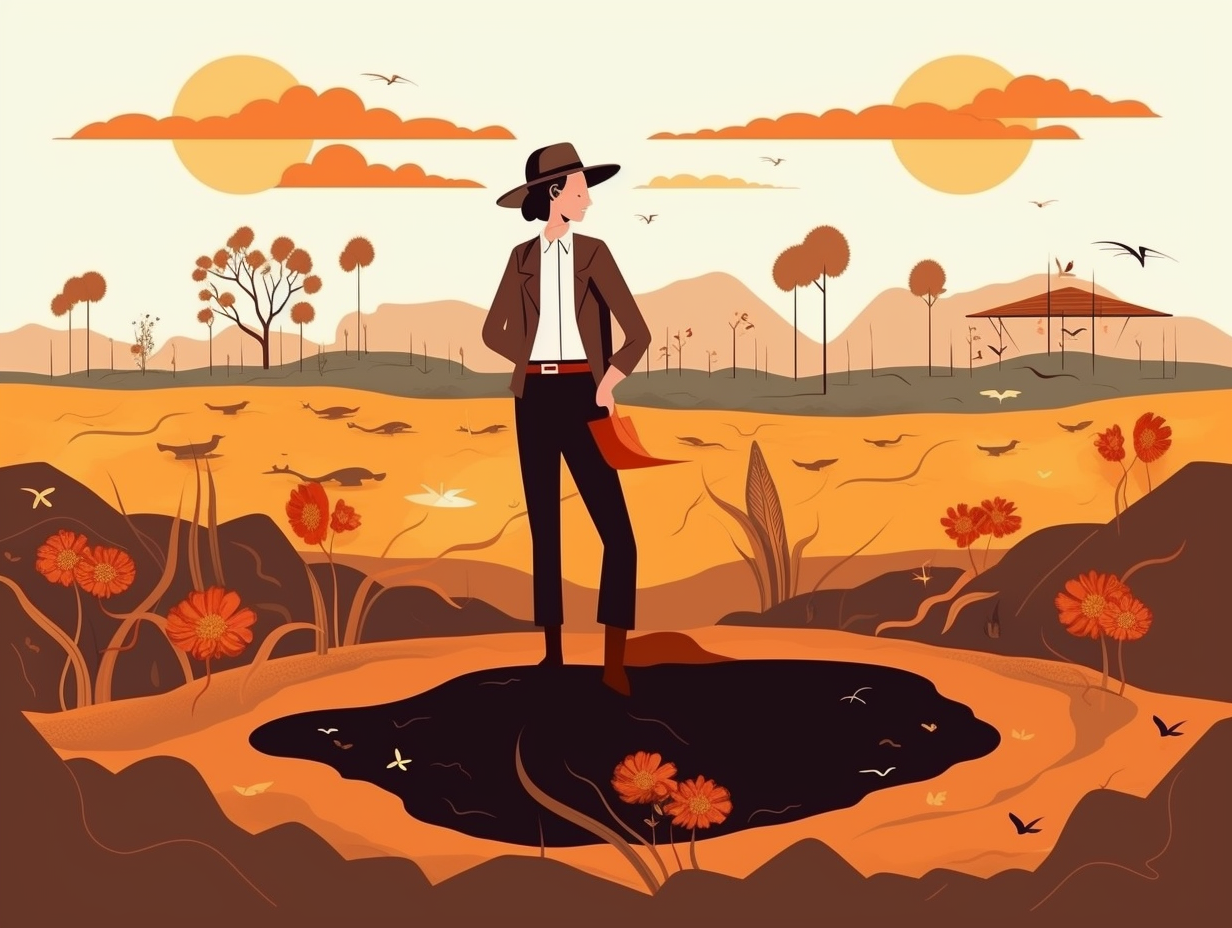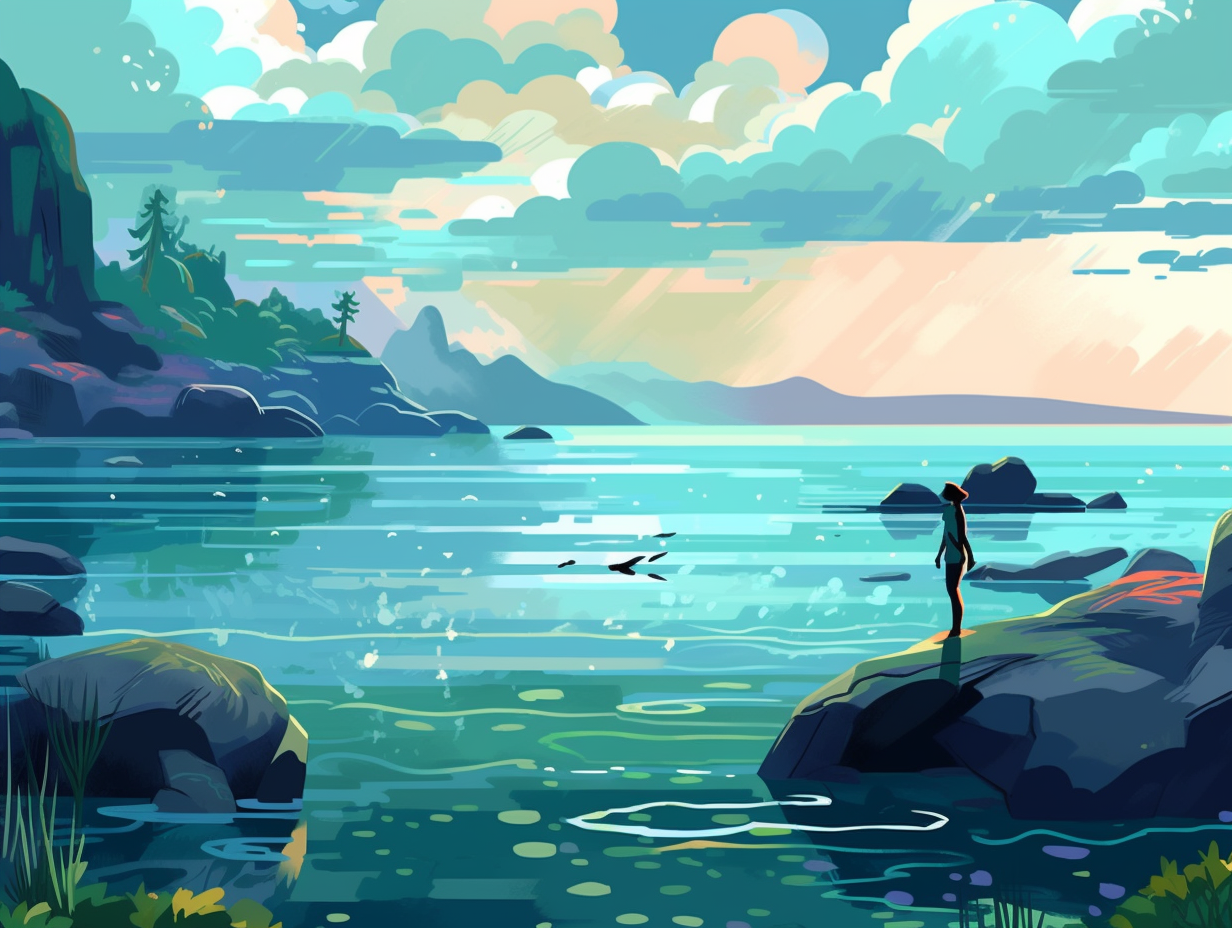Discover the Wonders Beneath Your Feet: Top 14 Fun Facts About the Geosphere!

1. Earth's Core: Hotter Than the Sun's Surface
Who says the Earth doesn't know how to party? We've got a raging inferno going on down below, hotter than the Sun's VIP section: Recent findings have estimated that the temperature at the Earth's core reaches a sizzling 6000 degrees Celsius, which is about 9% higher than the surface temperature of the Sun! This fascinating discovery not only gives us a better understanding of Earth's inner heat and our planet's magnetic field but also reminds us just how wild and untamed our exquisite globe can be.
Source => forbes.com
2. Mount Chimborazo: Planet's VIP Lounge
If planetary popularity was measured by distance from the Earth's core, Mount Chimborazo would be the ultimate VIP: This unassuming peak in Ecuador is actually the farthest point from the center of the Earth due to the equator bulge, making it the closest spot on our planet to outer space. Although Mount Everest still bags the title of tallest mountain from sea level, Mount Chimborazo's claim to fame elevates it to star(ter) status, giving the expression "reach for the stars" a whole new meaning.
Source => earthhow.com
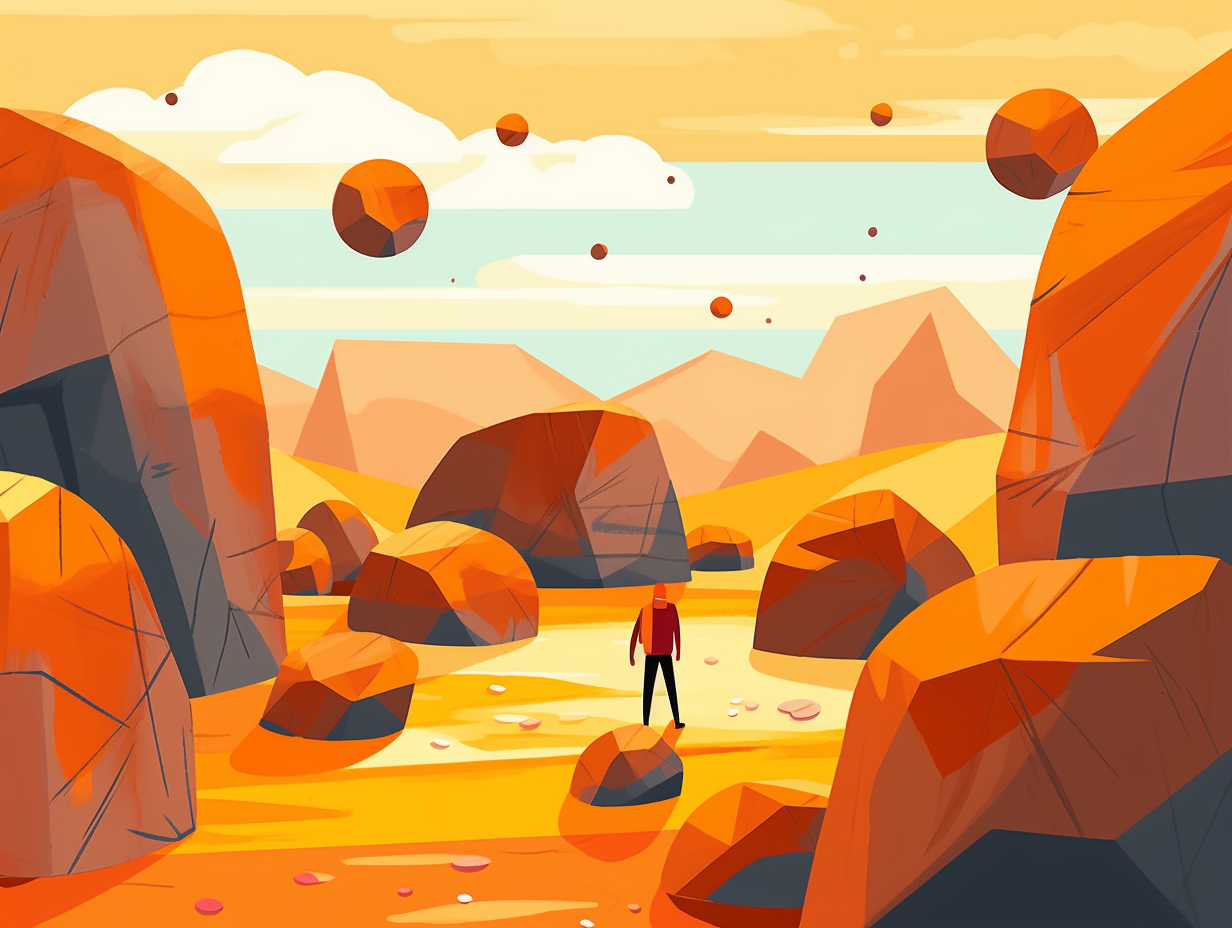
Did you know that basaltic rocks have a secret weapon against CO2? They can turn it into solid minerals, providing a revolutionary solution for greenhouse gas storage! 🌍✨ Discover how this was tested in Iceland with a 90% success rate.
=> Fun Facts about Rocks
3. Earth's Tectonic Plates: From Slow Walkers to Speed Racers
Ever been stuck behind a slow walker on a crowded sidewalk, only to see them suddenly hit the gas like they're in a Fast and Furious movie? Well, it turns out that our beloved Earth has been pulling that stunt for eons: Geoscientists have discovered that tectonic plates, during extreme strain, can accelerate up to 20 times their previous speed, similar to going from a leisurely pedestrian pace to vroom-vroom velocities. This remarkable transformation, observed during the breakup of ancient supercontinents such as Pangea, is directly related to the thinning of the continental crust and was deduced by analyzing seismic data and building intricate models.
Source => nytimes.com
4. Earth's Recycling Project: Breaking Down Minerals
Who says recycling is just for soda cans and plastic bottles? Mother Earth has a little recycling project of her own going on: The movement and subduction of tectonic plates release elements and water from minerals like Lawsonite, providing essential insights into the complex processes that occur deep within the Earth's crust and shedding light on the sources of these elements.
Source => frontiersin.org

5. Earth's Fruit Salad: A Delicious Mix of Elements
If the Earth were a fruit salad, the recipe would include just a pinch of around 90 different elements to concoct this irresistible geological dish: Iron, oxygen, silicon, magnesium, nickel, sulfur, calcium, and aluminum make up the majority of the ingredients, tantalizing the taste buds of geologists everywhere. The Earth's scrumptious core is mostly iron and nickel, followed by a tender mantle layer blending magnesium and iron silicate minerals, and a crust that's bursting with oxygen, silicon, and a sprinkling of other elements that have been patiently marinating for billions of years in a process called planetary differentiation. To top it all off, there are around 4000 unique minerals that are the cherries on top of this cosmic confection.
Source => openeducationalberta.ca
6. Geosphere's Fondue Party: Molten Beginnings
Did you know that our geosphere was into fondue long before it became trendy among humans? It was a simmering, mingle of molten goodness in its early days: The Earth's geosphere began as a scorching ball of fiery material that eventually cooled down and firmed up, forming distinct layers like the crust, mantle, and core during the Hadean Eon. Bonus trivia: this molten fiesta also birthed our lovely Moon through a high-stakes game of celestial bumper cars!
Source => geo.libretexts.org
7. Moho Discontinuity: Earth's Thrilling Plot Twist
If the Earth were an award-winning novel, the Moho discontinuity would be a mysterious and thrilling plot twist that leaves readers gasping for more: This fascinating boundary, named after Croatian seismologist Andrija Mohorovičić, serves as a natural speed bump for seismic waves as they transition between the Earth's crust and the lithospheric mantle, boasting a suspenseful transition zone up to 500 meters.
Source => en.wikipedia.org
8. Earth's Transition Zone: Hidden Water Reserve
Next time you're feeling thirsty, why not head down to Earth's transition zone? It's got enough water to rival the world's biggest water park – only, there's a teeny tiny catch: this water isn't your typical liquid, vapor, solid, or plasma. Instead, it exists as hydroxide ions trapped in the crystals of super cool minerals, like ringwoodite and wadsleyite, formed from olivine under extreme heat and pressure. And guess what? The water stored in these minerals is equal to all the oceans on Earth's surface!
Source => nationalgeographic.org
9. Inner Core's Pressure: Talk About a Heavy Burden!
Feeling a little pressured? Well, Earth's inner core has you beat by 3.3 million times: This metallic sphere withstands a staggering 330 gigapascals of pressure, keeping its iron and nickel constituents from melting despite the scorching temperatures.
Source => scienceline.ucsb.edu
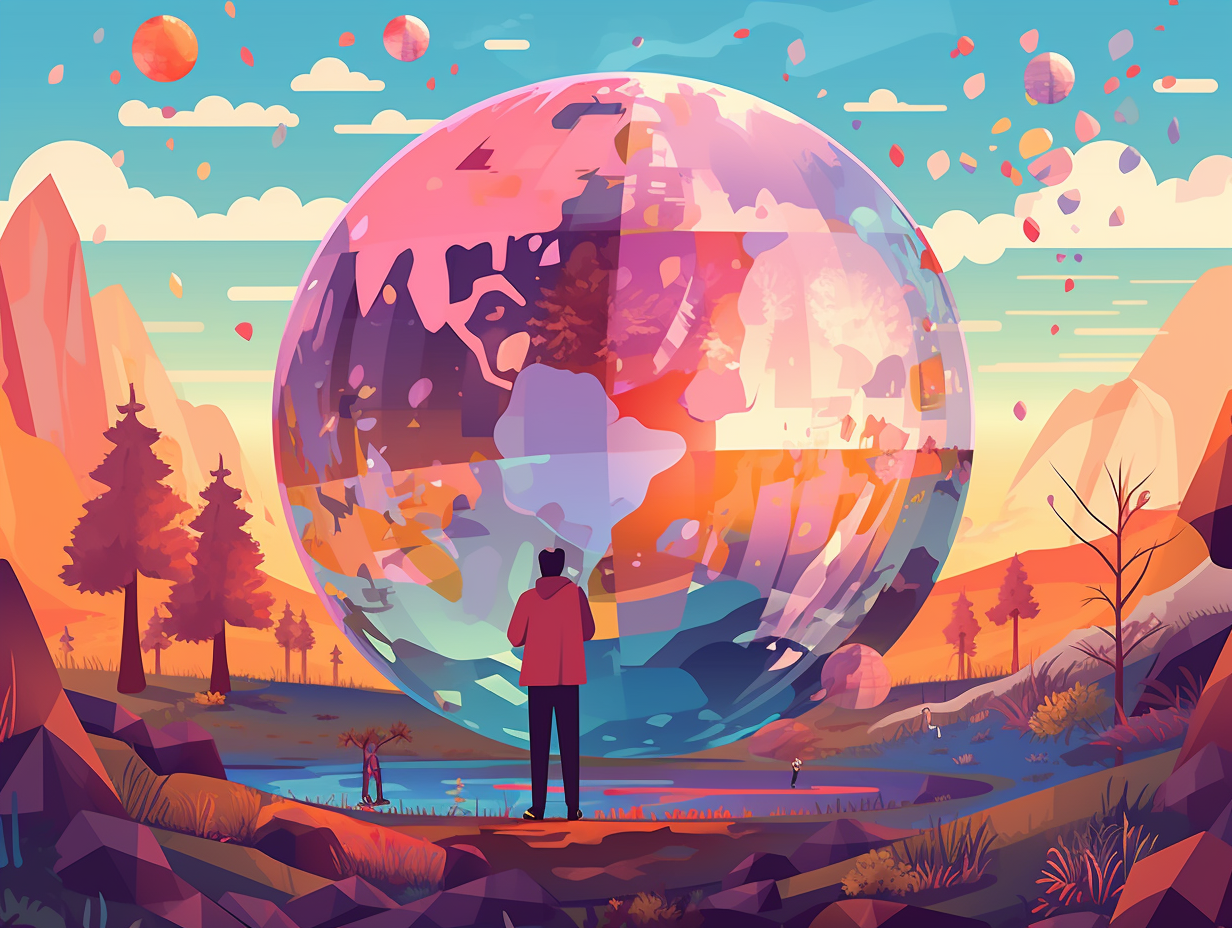
10. Piezoelectric Rocks: Zapping Electricity
When life gives you lemons, you make lemonade; but when life gives you rocks, you might just zap some electricity out of them: In 1880, French physicists Jacques and Pierre Curie discovered the piezoelectric effect, where certain solids like crystals and ceramics can generate electricity from mechanical stress, leading to a vast array of modern applications like producing and detecting sound, high voltage electricity generation, and even atomic-scale imaging via scanning probe microscopes!
Source => en.wikipedia.org
11. Earth's Jewelry Box: The Bushveld Complex
If the Earth had a jewelry box, the Bushveld Complex in South Africa would be its bedazzling centerpiece: The world's largest repository of magmatic ore deposits also boasts major deposits of platinum, chromium, and vanadium, spreading across 50,000 square kilometers with an exposed thickness of 8 kilometers - making it one of the largest differentiated igneous bodies on our planet.
Source => britannica.com
12. Earth's Belly Button: Kola Superdeep Borehole
Did you know that humanity tried to give Earth a belly button? Funny as it may sound, we poked a hole right into the heart of Mother Earth: The Kola Superdeep Borehole in Russia is the deepest human-made hole, reaching 12,262 meters (40,230 feet) deep. Surprisingly, the drilling uncovered an unexpected absence of basaltic layers and water at three to six kilometers deep. This led scientists to theories about aquifers at unforeseen depths, while also developing new technologies for deep geophysical study.
Source => en.wikipedia.org
13. Mineral Throwin' Shade: Azurite in Art
Once upon a time, artists threw shade with minerals: Azurite, a basic carbonate of copper, was a popular pigment in European paintings during the middle ages and Renaissance, featuring prominently in masterpieces by Vermeer like The Officer and Laughing Girl, A Maid Asleep, and the window green shutters of The Little Street, despite playing second fiddle to the more expensive ultramarine.
Source => essentialvermeer.com
14. Feeling Crusty? Earth's Thinnest Layer
Feeling a little crusty today? You're in good company: The Earth's crust is actually its thinnest layer, ranging from just 5 kilometers (3.1 miles) thick beneath the ocean floor to a whopping 70 kilometers (43.5 miles) thick beneath mountain ranges like the Himalayas.
Source => snexplores.org
Related Fun Facts

